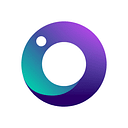Intuition is not good enough if you want to increase brand awareness. Find out how the reliability of brand tracking is what you need.
Would you like your target audience to know your brand? A resounding ‘Yes!’But why? Well, brand awareness rocks! The more people who know about your brand, the higher the chance they’ll become and stay customers. And why is tracking brand awareness important? You ask a lot of questions! Listen up: intuition is good but it is not enough to measure and increase brand awareness! Key stakeholders also demand more quantitative results so they can keep an eye on the ROI. To track a brand’s awareness, you need reliable data and a brand tracking tool that helps you measure and quantify your brand’s awareness.
Brand awareness is simply defined by how familiar people are with your brand. Brand awareness is important because it helps your audience to recognise, relate, convert and retain a relationship with your brand. It simply helps consumers to narrow their choices. Other positive benefits include: increased loyalty from customers, increased word of mouth marketing, and keeping your brand on the top of their minds.
How to Increase Brand Awareness Using Brand Tracking
You probably have some level of brand awareness already, that’s true. But don’t you want to increase brand awareness? Brand tracking can help with that. It can show you where you stand in terms of brand awareness for your target audience(s) and, also very important, how you perform against your competitors.
What are the benefits of brand tracking? Monitoring your brand’s health holds a mirror up to your brand’s weakness — but never fear, this is exactly where you need to be to start to increase your brand awareness. With key stakeholders demanding a deeper and quantifying overview of brand awareness, more and more successful teams are increasingly using brand analytics tools to do just this. An example of how brands can increase brand awareness is to define and target their niche audience (ie. the more focussed subgroup of the brand’s target audience).
With a niche audience focus, you can tailor your strategy to focus on showing a very specific customer selection exactly what it is you do or sell and how precisely you’ll solve their need or problem. Selecting a brand tracking tool will help brand managers do exactly this and get better results!
To show the value of tracking brand awareness using a brand tracker and how this data can help you increase brand awareness, we tracked some US-based e-learning brands. Here’s what we found.
Brand Awareness Across E-learning Brands
Below is the level of brand awareness of the general population for e-learning brands in the US for Q3 2019.
Khan Academy clearly has the highest brand awareness compared to the other brands. We can also see that there’s a significant gap until we reach 2nd place Udemy. However, both Udemy and the remaining competing brands rank very closely amongst themselves.
What this brand tracking data immediately tells these brands is that they need to increase brand awareness. Where they stand in the table currently can help them alter their brand strategy. For instance, all brands can look to Khan Academy to see what they are doing to increase brand awareness and spend some time copying their efforts. Or, they might just look at their nearest competition and set a goal to increase brand awareness above theirs (say Brainly above Udemy) before the end of the year.
For brands using brand tracking, they can track long term to see who is closest to them and continue to keep a close eye on competitor branding campaigns. Brand managers can see what is working, what is underperforming and get the insights on how to increase their own brand awareness, where to make it better, perhaps by entering new channels or by completely re-strategising their brand.
Increase Brand Awareness by Focusing on Niche Audiences
All that info above is great but brands need to go much deeper. We mentioned niche audiences above. Why? Well, brands are interested in niche audiences. Brands that are interested in niche audiences have no choice but to stand out because of heavy tailored marketing and if they don’t convert their niche audiences, they will fail.
We decided to create some niche audiences to show you how brand awareness can differ between e-learning platforms.
Coursera Persona: Age 26–45, High and Medium Income, High and Medium education level, Career oriented, full time employed
Compared to the general population audience, you can see that Udemy has increased their brand awareness from 17% to 23%, General Assembly 9% — 15% and Coursera 10%-13%. Now, these brands know how they are performing with a key audience that could potentially result in a lot of profit for them.
Urban Millennials Persona: Age 18–35, Location: US Cities
Within the urban millennials target audience, we see brand awareness leader Khan Academy drop from the increase they gained with the Coursera audience (49%) back down to the general population level (42%). All other brands also say a drop in comparison to the Coursera target audience.
This information might encourage brands to re-strategise and run a campaign towards the younger market, designing a marketing campaign around this demographic. However, it’s also important to remember when tracking brand awareness by using target audiences, you won’t always see a big difference between the general population and the target audience. But when you do, it should be flagged for strategic purposes.
Increasing Brand Awareness
Just as professionals turn to e-learning brands to improve particularly skillsets, brands can learn and improve their skills too! Learning how to increase brand awareness by tracking brands means using available data in a highly strategic way. It provides insights into what your team should be working on. It means less time wasted, more resources saved, and you and using real, data-driven results to inspire that amazing campaign that truly increases brand awareness.
Originally published at https://www.latana.com.
